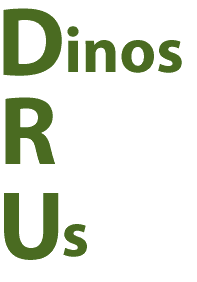|
A recent television commercial for McDonald's opens at night in the spooky exhibition hall of a natural history museum. A giant Tyrannosaurus rex skeleton gleams in the moonlight. Suddenly, by the miracle of digital animation, it moves slightly and sniffs the air. It smells food. With a roar it gallops through the museum, hunting for the source. It finds the delicious bait to be nothing other than a packet of McDonald's French fries in the hands of a dozing guard. When the guard realizes what the creature wants, he teases it with the French fries, making it sit up and beg, then roll over, and finally play dead, which it does with a sweeping bow, crashing into a heap of collapsing bones. The makers of this commercial intuited a basic feature of the human fascination with dinosaurs: its vacillation between contrary emotions. In the space of a minute, the McDonald's dinosaur goes from being sublime to ridiculous. It is ghastly, impressive, and monumental one moment, and the object of humiliation the next.
|
|
